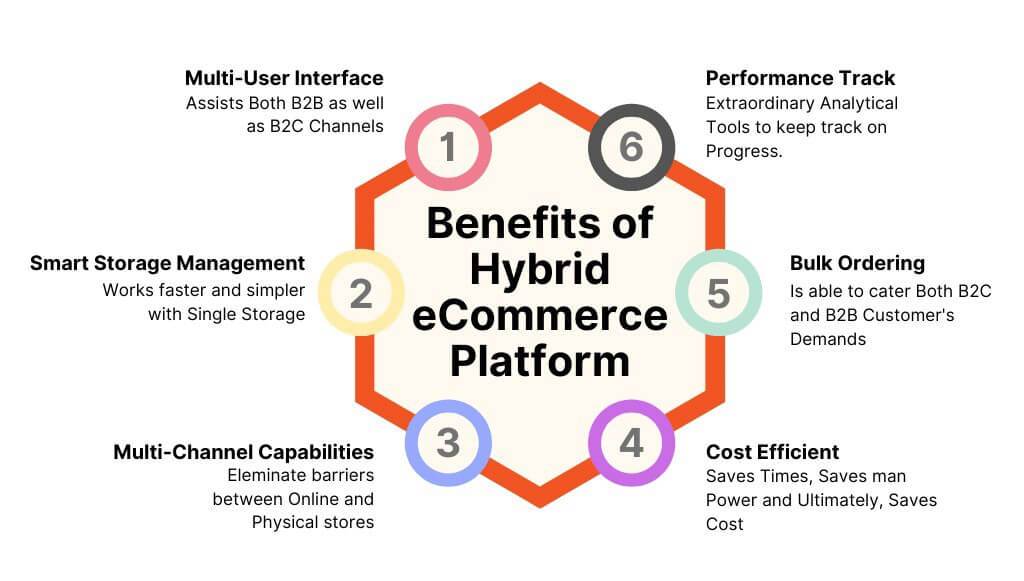In today’s fast-paced digital world, eCommerce has become an indispensable part of our daily lives. From ordering groceries online to purchasing high-end gadgets, the Internet has revolutionized the way we shop.
As the eCommerce sector continues to flourish, understanding its various models can provide crucial insights for both consumers and entrepreneurs. In this article, we will delve into the different types of eCommerce models that are shaping the way business is conducted online.
B2C: Business-to-Consumer
Probably the most prevalent of all eCommerce models, B2C refers to transactions between businesses and individual consumers. When you buy a pair of shoes from an online retailer, for instance, you’re engaging in a B2C transaction. Websites like Amazon, eBay, and Walmart largely operate under this model.
Characteristics:
Large customer base
Straightforward transactions
Short sales cycle
Lower customer acquisition costs compared to B2B
B2B: Business-to-Business
In contrast to B2C, the B2B model involves transactions between two businesses. These transactions usually involve products, services, or information that helps the receiving business operate more efficiently or gain a competitive edge. Companies like Alibaba and Wholesale Central are prime examples of B2B eCommerce platforms.
Characteristics:
Longer sales cycles
High-volume transactions
Complex decision-making processes involving multiple stakeholders
Higher customer acquisition costs
C2C: Consumer-to-Consumer
C2C platforms allow consumers to sell goods and services to each other. eBay started as a pure C2C platform where individuals could auction off their belongings to the highest bidder. Other examples include platforms like Craigslist and Facebook Marketplace.
Characteristics:
Highly competitive pricing
Vast array of unique products
Less regulation compared to B2B and B2C models
Quality can vary significantly
C2B: Consumer-to-Business
This is a less common but increasingly relevant model where individual consumers offer goods or services to businesses. Freelancing platforms like UpWork and Fiverr allow skilled individuals to offer their services to businesses around the globe.
Characteristics:
Highly specialized services
Direct negotiation between the service provider and the business
Pricing can vary drastically
Quality and reliability are critical factors
B2G: Business-to-Government
This model encompasses transactions between businesses and governmental organizations. Companies often provide services or goods to the government through a bidding process. These contracts can be highly lucrative but are often subject to extensive regulations.
Characteristics:
Long sales cycles
Stringent quality and compliance checks
High-value contracts
Limited customer base
G2C: Government-to-Consumer
The G2C model is primarily focused on transactions between government agencies and the general public. This can involve anything from paying taxes online to renewing licenses.
Characteristics:
Strict data protection laws
High level of accountability
Critical public services are often provided
D2C: Direct-to-Consumer
This model has gained traction in recent years as more manufacturers opt to sell their products directly to consumers. By cutting out middlemen, companies can offer better pricing and more personalized services.
Characteristics:
High level of brand control
Better profit margins
Close customer relationships
Requires a strong online presence
SaaS: Software as a Service
While not traditionally classified as an eCommerce model, SaaS companies conduct most of their business online. They provide software solutions to both individuals and businesses, typically on a subscription basis.
Characteristics:
Recurring revenue streams
High customer retention rates
Scalability is crucial
Often involves free trial periods
Understanding the nuances of each eCommerce model is essential for anyone interested in the digital commerce landscape, whether you’re a budding entrepreneur or an informed consumer. Each model comes with its own set of characteristics, opportunities, and challenges. By comprehending these differences, one can make better business decisions, enhancing profitability and customer satisfaction.
The eCommerce world is ever-evolving, and staying ahead of the curve requires an in-depth understanding of the ecosystem. As technologies advance, new types of eCommerce models may emerge, each with unique traits and market demands. Hence, keeping an eye on the evolving trends is essential for sustained success in the digital marketplace.
Hybrid Models: A Blend of Multiple Approaches
As the eCommerce landscape continues to evolve, we’re seeing a rise in hybrid models that combine elements from two or more traditional models. For instance, Amazon began as a B2C platform but has incorporated B2B elements through its Amazon Business platform. Moreover, it also serves as a C2C platform via its Marketplace.
Characteristics:
Versatility in serving different customer segments
Complex operational requirements
Higher marketing costs due to diversified audiences
Opportunities for cross-selling and upselling
P2P: Peer-to-Peer
Another model worth mentioning is the Peer-to-Peer (P2P) model, closely related to C2C. However, it is primarily associated with the sharing economy. Websites like Airbnb and Uber technically fall under this category. These platforms facilitate the sharing of goods and services among individuals, often in exchange for a fee.
Characteristics:
Strong community engagement
Variable quality of goods and services
Pricing is often flexible
Lower overhead costs for the platforms
Subscription-based eCommerce
Increasingly popular, especially among SaaS companies and D2C brands, subscription-based eCommerce provides consumers with a set of goods or services on a recurring basis. Companies like Netflix or monthly beauty box subscriptions operate under this model.
Characteristics:
Predictable and consistent revenue streams
High focus on customer retention
Often provides value through bundled offerings
Requires excellent customer service for subscription renewals
Marketplace Model
While not strictly a separate model, the marketplace model is an operational style used by various types of eCommerce businesses. It involves a platform facilitating transactions between buyers and sellers without owning any inventory itself. eBay, Etsy, and Alibaba function as marketplaces.
Characteristics:
Highly scalable
Diverse product offerings
Reliance on third-party sellers for inventory
Commission-based revenue
Mobile Commerce
As smartphones become increasingly indispensable, Mobile Commerce (often abbreviated as m-commerce) has gained prominence. This form of eCommerce occurs entirely through mobile devices.
Characteristics:
Optimized for mobile user experience
Quick and impulsive buying decisions
Geolocation features for targeted marketing
Integration with mobile wallets for seamless transactions
White-labeling and Private Labeling
These models involve selling generic products under a brand’s specific name. While white-labeling often deals with digital products like software, private labeling usually refers to physical products.
Characteristics:
Lower production costs
Quicker market entry
Limited control over manufacturing
Branding and marketing are critical for success
In the ever-evolving realm of eCommerce, understanding the different models is crucial for entrepreneurs aiming to find their niche, as well as consumers looking to better navigate the online marketplace.
As digital platforms continue to innovate and adapt to changing consumer behaviors and technological advances, new hybrid models and specialized forms are likely to emerge. Keeping abreast of these changes is vital for anyone who wants to succeed in this dynamic and competitive field.
By equipping yourself with a comprehensive understanding of the myriad eCommerce models and their respective characteristics, you’ll be well-positioned to make informed decisions that can profoundly impact your business strategy or personal shopping experience.
Whether you’re interested in starting your own eCommerce venture or simply becoming a more savvy online shopper, the knowledge of these models is a tool you’ll find invaluable.
On-Demand eCommerce Models
In this fast-paced world, the convenience of getting what you want right when you want it has given rise to the on-demand eCommerce model. Companies like UberEats, Postmates, and Instacart operate under this model, providing immediate or near-immediate delivery of goods and services.
Characteristics:
Time-sensitive services
Real-time tracking
Often utilizes a mobile app for operations
High focus on customer satisfaction and speed
Social Commerce
Social Commerce leverages social media platforms to facilitate buying and selling activities. With features like Facebook Shop or Instagram’s ‘Swipe-Up to Shop,’ social commerce is making it easier for consumers to make purchases without even leaving their favorite social media sites.
Characteristics:
Highly visual and interactive
Influenced by user-generated content
Quick buying process
Effective for lifestyle and fashion products
Auction Model
While one of the older forms of online commerce, the auction model still holds relevance today. Sites like eBay have popularized this model, allowing sellers to list items for buyers to bid on, usually within a fixed period.
Characteristics:
Competitive pricing
Time-sensitive
Buyer and seller ratings
Broad variety of goods
Dropshipping
Another eCommerce model that has gained traction is dropshipping, where the retailer does not keep products in stock. Instead, they pass the customer order and shipment details to a third-party supplier, who then ships the products directly to the consumer.
Characteristics:
Low startup costs
No need for inventory management
Relatively lower profit margins
Highly competitive market
Local eCommerce Models
Localized or geo-specific eCommerce models focus on serving customers in a particular geographic area. Companies like DoorDash or localized grocery delivery services work under this model.
Characteristics:
Limited operational area
Offers localized goods or services
Can integrate local culture and customs into offerings
May offer quicker delivery options
Importance of eCommerce Model Choice for Businesses
The choice of an eCommerce model can have a substantial impact on various aspects of a business, from supply chain logistics to marketing strategies. For instance, a B2B model may require a robust sales team and longer customer nurturing cycles, while a B2C model will need an effective online storefront and customer service. Entrepreneurs need to carefully consider the advantages and disadvantages of each model before diving into the eCommerce world.
The Future of eCommerce Models
As technology advances and consumer preferences evolve, the world of eCommerce is set to undergo further changes. Emerging technologies like blockchain, virtual reality, and AI will likely bring about new types of eCommerce models or modify existing ones. Moreover, factors like sustainability and ethical considerations are becoming increasingly important, and future models may well focus on these aspects.
Understanding the current landscape is vital, but staying adaptable and open to future changes is equally crucial for long-term success. The eCommerce world is fluid, and those who can navigate its shifting currents will be the ones to thrive. As such, whether you’re an entrepreneur or a consumer, a solid grasp of these eCommerce models will serve you well, both today and in the years to come.









